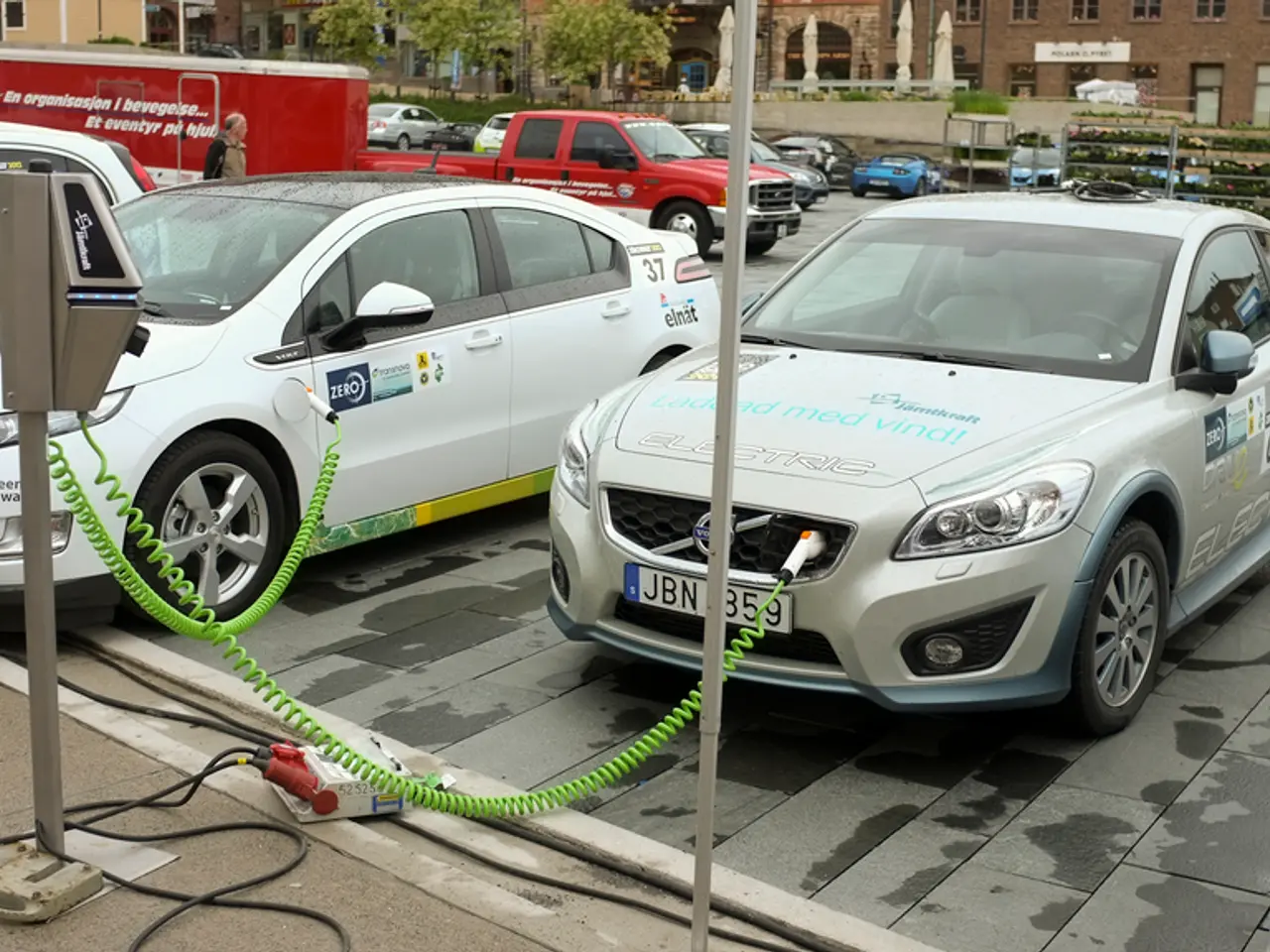Guidance for Automobile Dealerships on Embracing Electric Vehicles Transition
In the rapidly evolving electric vehicle (EV) landscape, power reliability has become a top priority for Original Equipment Manufacturers (OEMs), fleets, consumers, and dealerships alike. Forward-thinking dealerships with proactive energy strategies are set to stand out from their competitors in this EV-first era.
The United Kingdom is projected to witness electric vehicles accounting for more than 30% of new car sales by the end of 2025. This shift towards electric mobility presents a significant opportunity for dealerships, but it also brings challenges, such as insufficient local grid capacity for sustained high-speed EV charging, particularly in suburban or semi-rural areas.
One solution to these challenges is the deployment of battery energy storage systems (BESS). These systems not only provide backup power during grid outages, ensuring showrooms remain lit and chargers stay online, but they also help dealerships meet demand without overloading the existing infrastructure.
The benefits of BESS extend beyond operational continuity. By selling unused energy back to the grid, dealers can create a new revenue stream and potentially accelerate payback. Moreover, a holistic energy strategy using BESS can protect gross margins for dealerships, even as energy prices fluctuate.
Case studies from various dealerships across the UK and Europe highlight the potential of BESS. For instance, one Irish dealership has seen EV charging revenues balloon by 75% with BESS. Similarly, a European luxury dealership reported £69,000 ($92,000) in annual energy savings by switching to a battery-first charging strategy with BESS.
In England, a dealer experienced an 80% reduction in electricity costs with BESS, while a Scottish dealership benefited from a 10% higher net present value (NPV) with BESS compared to a traditional grid upgrade. These examples demonstrate the financial advantages of BESS, which can lower the barrier to entry for smaller or family-owned dealerships, allowing them to compete with national chains.
Deployments of BESS are starting to use as-a-service financing models, requiring no capital outlay and a monthly fee for installation, maintenance, and monitoring. This financing model makes it easier for dealerships to adopt BESS technology.
On-site battery energy storage systems can be deployed faster than grid upgrades, sometimes in a matter of months, and can be paired with solar to generate electricity for EV charging stations. This combination of renewable energy sources not only reduces reliance on the grid but also provides a predictable source of power.
However, it's important to note that while the benefits of BESS are evident, specific reports on UK car dealerships that have already benefited from up to a 10% higher net present value through the use of BESS for improving EV dealership power supply are yet to be disclosed.
Despite this, major players in the industry are committing to energy innovation. Jaguar Land Rover, for example, has implemented renewable energy projects like a large solar park at their Gaydon headquarters, indicating a commitment to energy innovation, though without explicit BESS financial impact details.
In conclusion, as the UK moves towards an EV-first era, dealerships that invest in proactive energy strategies, particularly battery energy storage systems, will be best positioned to lead the market, ensuring operational continuity, creating new revenue streams, and reducing costs.
Read also:
- Understanding Hemorrhagic Gastroenteritis: Key Facts
- Trump's Policies: Tariffs, AI, Surveillance, and Possible Martial Law
- Expanded Community Health Involvement by CK Birla Hospitals, Jaipur, Maintained Through Consistent Outreach Programs Across Rajasthan
- Abdominal Fat Accumulation: Causes and Strategies for Reduction








